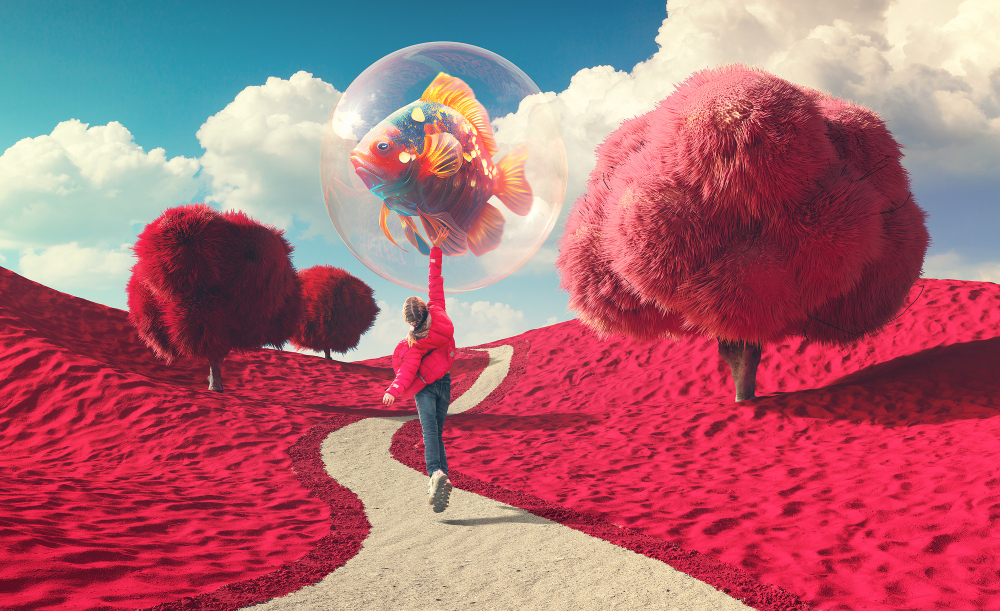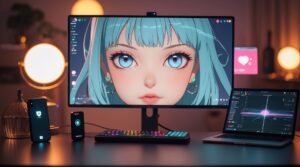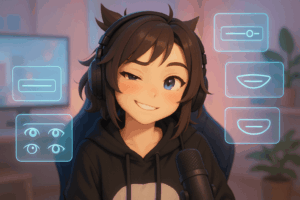In recent years, the world of 3D art has seen a remarkable transformation with the help of AI-generated 3D models. With the emergence of powerful AI tools, even beginners can now venture into the exciting realm of 3D art creation. This technological breakthrough has democratized 3D art, making it more accessible than ever before. It has opened up a world of creative possibilities, enabling artists, designers, and enthusiasts to breathe life into their imaginations with the help of AI-driven 3D modeling.
In this tutorial, we will explore how to properly utilize the potential of AI-generated 3D models to craft stunning and innovative 3D artworks, regardless of your level of expertise.
Understanding the Basics: AI-Generated 3D Models
Before we dive into the practical steps, let’s get acquainted with the key concepts and tools you’ll need for this creative journey:
AI-generated 3D models, created through the power of AI, represent a digital revolution in the world of 3D art. These models are increasingly finding applications in various fields, including gaming, architecture, healthcare, and education.
AI-generated 3D models are digital representations of objects or scenes brought to life by sophisticated algorithms. These algorithms analyze data, learn patterns, and generate 3D models that can be unbelievably realistic. They have transformed the traditional 3D modeling process, making it more accessible to a wider audience.
Features of AI-Generated 3D Models
Furthermore, the versatility of AI-generated 3D models is a hallmark of their innovation. They can be used in the gaming industry to create lifelike characters, objects, and immersive environments. Architects benefit from these models in the creation of virtual building prototypes, streamlining the design and planning process. In healthcare, AI-generated 3D models assist with medical imaging, leading to precise diagnoses and facilitating surgical planning. These models enhance learning by providing interactive, three-dimensional educational materials that engage and educate students in the education sector.
In addition to their versatility, AI-generated 3D models are celebrated for their precision and realism. These models can replicate textures, lighting, and shading in such detail that they closely mimic the physical world.
The accessibility of AI-generated 3D models is another remarkable aspect. Beginners and professionals alike can now create 3D art using AI tools, breaking down previous barriers to entry and democratizing the world of 3D modeling.
Furthermore, the efficiency offered by AI-generated 3D models is a game-changer. They can rapidly generate complex 3D objects and scenes, saving artists and professionals both time and money in the creative process.
Last but not the least, AI-generated 3D models promote collaboration. Artists and designers can work on their creations collaboratively and make rapid corrections, making the creative process more dynamic and efficient.
It’s important to note that while AI-generated 3D models offer numerous advantages, ethical considerations are also vital. Topics such as copyright, intellectual property, and the responsible use of AI in content creation should be understood and respected when working with AI-generated 3D models.
With these key concepts in mind, you’re well-prepared to embark on your journey of creating 3D art with AI-generated 3D models, regardless of your level of expertise.
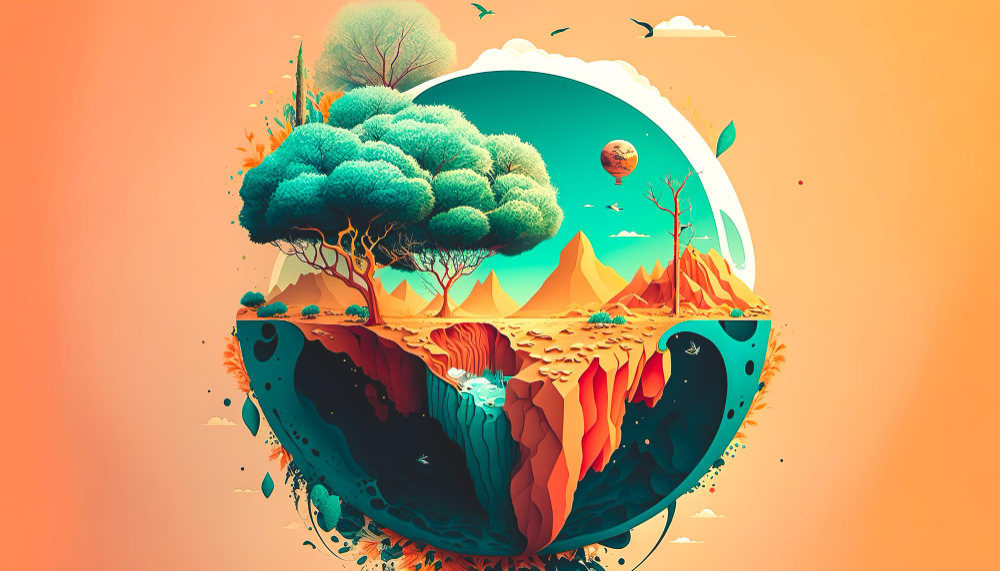
Step-by-Step Tutorial: Creating 3D Art with AI-Generated 3D Models
Now, let’s walk through the process of creating 3D art using AI-generated 3D models. We’ll break it down into simple steps to help beginners get started:
Step 1: Choose the Right AI 3D Model Generator
Start by selecting a reliable AI 3D model generator. There are several options available online, each with its own unique features and capabilities. In this step, you need to ensure that the tool you choose aligns with your artistic goals.
Consider factors like your level of expertise, the specific type of 3D art you wish to create, and the compatibility of the software with your hardware. Additionally, explore user reviews and tutorials to gauge the learning curve and community support for the software, which can greatly aid in your creative journey.
While choosing your AI 3D model generator, take into account whether the tool offers features for importing 2D images for conversion into 3D models if this aligns with your project requirements. This can be a valuable asset for artists looking to transform their 2D artwork into 3D masterpieces.
Lastly, always keep an eye on updates and new features from your chosen AI generator, as the technology is continuously evolving, and updates may bring fresh capabilities to enhance your creative potential.
Step 2: Import Your Design or Image
If you have a specific design or image in mind, the next step is to import it into the AI generator. Fortunately, most AI modeling tools support a wide range of file formats, making it easy to work with your preferred images. Whether it’s a 2D image, a sketch, or an existing 3D model, these tools are designed to be versatile and accommodating of various input types.
To import your design or image, navigate to the import function within the 3D model software. Typically, this involves selecting the file from your computer or device and initiating the import process. Once your design or image is successfully loaded into the AI generator, you’re ready to move on to the next stages of customization and transformation.
This step is crucial as it serves as the foundation for your creative project, and the quality and detail of your imported design will significantly influence the final 3D art piece you aim to create.
Step 3: Customize and Refine
Once you send import your design, you can start customizing it. Adjust the dimensions, angles, colors, and textures to match your creative vision. This is where you can experiment with different artistic styles to find out the best preferred one.
During the customization process, pay close attention to detail. Small adjustments can have a significant impact on the overall output of your 3D art. You can fine-tune every aspect of your model to achieve the level of precision you desire.
Experiment with different color palettes to evoke specific emotions or moods within your artwork. Whether you’re aiming for vibrant and energetic or subdued and tranquil, the AI generator provides the flexibility to tailor the colors accordingly.
Additionally, remember that this step allows you to define your unique artistic style. You can explore a wide range of artistic styles, from photorealistic to abstract, allowing you to express your creativity in ways that were previously limited only by your imagination. This phase of customization and refinement is where your vision comes to life in the realm of 3D art.
Step 4: Add Detail and Depth
To enhance the appeal of your 3D art, it’s crucial to infuse it with intricate details and depth. This step involves the incorporation of elements such as texturing, lighting, and shading to breathe life into your model.
Firstly, apply textures to your 3D model to give it a realistic quality. Whether it’s imitating the roughness of a stone wall or the smoothness of polished wood, textures add depth and authenticity to your creation. AI generators often offer a library of pre-designed textures for you to choose from or allow you to create custom textures to suit your artistic vision.
Experiment with various lighting effects to achieve the desired atmosphere in your 3D art. Adjust the position, intensity, and color of light sources to create shadows and highlights that enhance the 3D feel of your model. Proper lighting can dramatically affect the mood and ambiance of your artwork.
Employ shading techniques to add depth and dimension to your 3D model. Shading gives the illusion of volume, making your art appear more lifelike. AI generators often provide tools for easy shading, allowing you to control how light interacts with the surfaces of your model.
Pay attention to fine details, which can be small but make a significant difference in the overall quality of your art. This might involve adding wrinkles to fabric, imperfections to surfaces, or intricate patterns to objects. Small details contribute to the overall realism of your 3D creation.
By focusing on detail and depth in this step, you can elevate your 3D art from a basic model to a captivating and realistic piece. These techniques transform your creation into a more immersive and engaging experience for the viewer, enriching the overall impact of your artistic expression.
Step 5: Review and Export
After you’ve fine-tuned your 3D art, take a moment to review your work. Ensure that it aligns with your artistic vision. After this, it’s time to export your creation in your desired format. You can use them in various applications, including gaming, animation, and more.
This review step is critical to ensure that your 3D art meets your standards of quality and artistic intent. It allows you to double-check for any imperfections, discrepancies, or elements that may need further adjustment. Pay attention to every detail, from the dimensions and colors to the lighting and shading, as these factors play a significant role in the final outcome of your artwork.
In addition to assessing your art from an artistic perspective, consider its practical application. Think about where and how you intend to use your 3D model. Whether it’s for a video game, an animation project, or any other medium, ensure that your creation aligns with the requirements and expectations of that platform.
Ultimately, the success of this step is reflected in your personal satisfaction. If you are content with the final result you’re ready to export your 3D art. Most AI generators provide various export options, allowing you to save your artwork in formats suitable for different applications and platforms.
By reviewing and exporting your work in this step, you ensure that your 3D art is not only a true representation of your creativity but also prepared for practical use and sharing in the medium or context you envisioned.
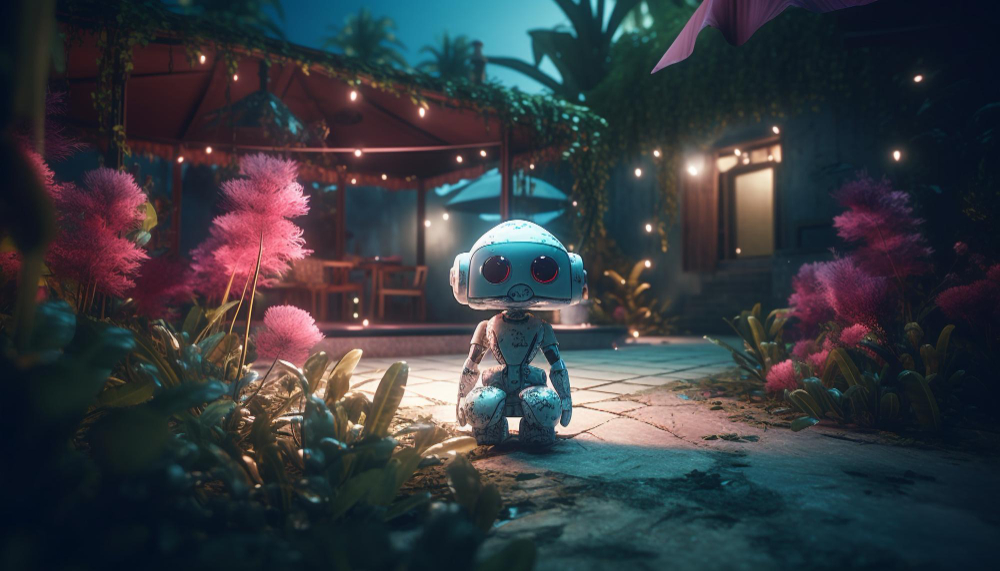
Conclusion
Creating 3D art with AI-generated 3D models has democratized the world of digital art, making it an exciting and inclusive creative journey. With the right AI 3D model generator and a dash of imagination, you can craft awe-inspiring, one-of-a-kind 3D masterpieces with wase. So, why wait? Take the plunge into the realm of 3D art with AI and let your creative spirit soar. Whether you’re an aspiring artist, a game developer, AI-powered 3D modeling tools like 3Daily offer a vast universe of possibilities for you to explore and turn your artistic dreams into reality. Embrace this technological wave, and let your imagination thrive in the boundless realm of AI-generated 3D art. Get on your computer to now to create a 3D masterpiece.

